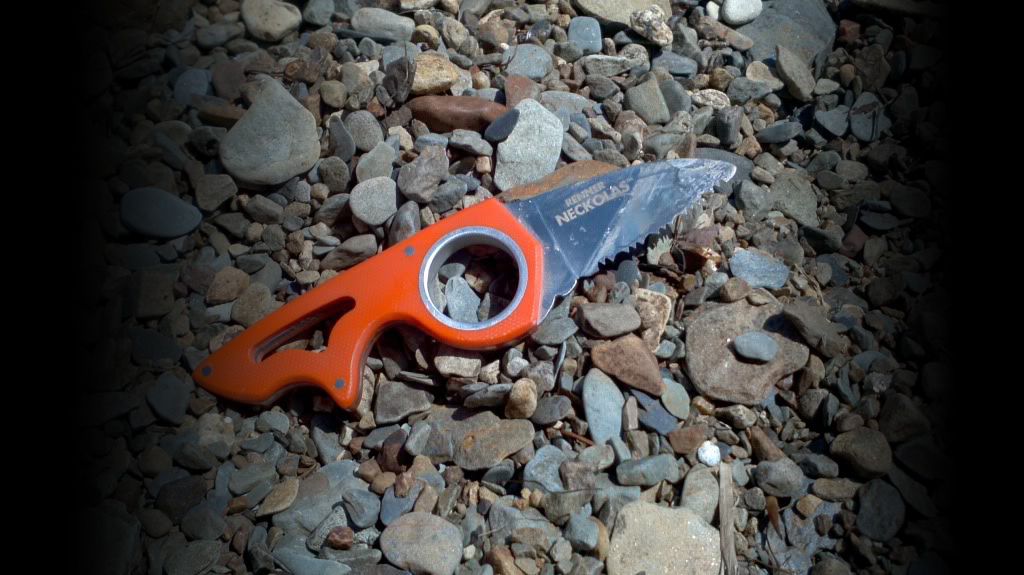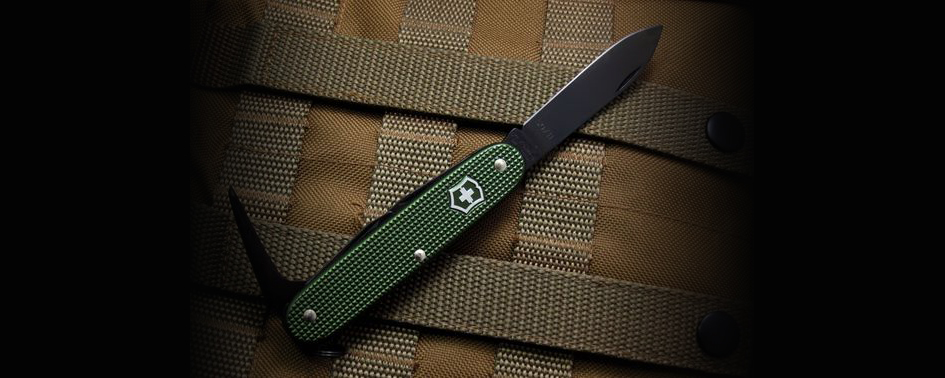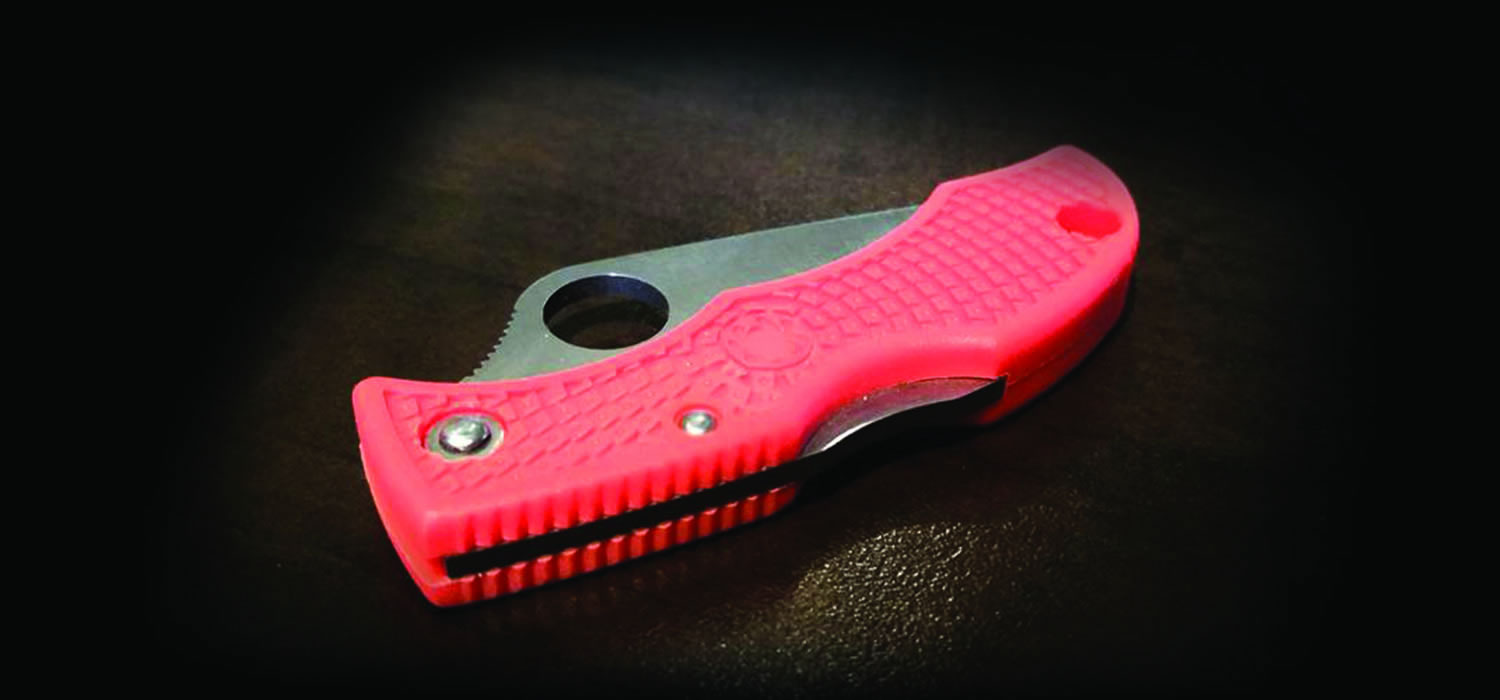- You are here:
-
Home

-
Knife Reviews

- Kansept

Today’s the day: the LOOPDOT is here. It’s small, it’s clever, and it’s loaded with features. The beam gives you a punchy center spot paired with smooth flood light, and the rotary dial makes switching modes feel natural. The real magic is the RGB pixel display, which responds to movement, taps, and twists while still giving you useful info. It’s one of those lights you find yourself picking up just to mess with, and it still pulls its weight when you actually need it.
Interesting in getting your own LOOPDOT? Head on over to the companies site and snag one while they're on sale.
Case knives have a long history of producing top-notch traditional cutlery, going back more than 130 years. From time to time, they’ll release something with a special handle material or bring back a pattern from the vault, but at their core, Case has always stayed true to what they do best. In recent years though, the company has taken some bold steps into new territory. The Kinzua and Marilla models introduced aluminum frame locks and modern blade steels, showing that Case could go beyond slip joints and delves into the world of high-end tactical folders. That experience led to the creation of two modern traditionals—the Highbanks and the Longhouse—both of which merged a classic barlow-inspired design with pocket clips and premium materials.

Published in
Knives
Tagged under
It’s incredible to see how much Vosteed has grown over the past few years. Models like the Thunderbird and the Grind sold out almost instantly, fueled by the brand’s rising popularity and limited production runs. Now, in 2025, Vosteed releases several new models each year. While drops still sell out, it feels like there’s finally a little more to go around.
At Blade Show, I had the chance to meet Yue Dong and the Vosteed team and take a look at some of their upcoming designs. One that immediately caught my attention was the Vombat—a compact folder available in several variations and, interestingly, with the ability to swap scales.

The flashlight scene is an incredible one, filled with passionate folks and technology that keeps pushing boundaries. I thought the knife world was intense, but it turns out making things bright can be every bit as competitive as making things sharp. We’ve covered our fair share of EDC lights in the past, and they come in all shapes and sizes. Personally, I prefer something slim that disappears into a pocket, but I’ve grown to appreciate a good keychain light. They’ve often felt like an afterthought—just bright enough to find a keyhole or dig something out of a bag. But Nitecore has made it clear they’re not content with “just enough.”

Published in
Flashlights
I’ve been into knives for a long time, and there are moments in this hobby where it feels like innovation has slowed to a crawl. You see familiar patterns over and over: same steels, same materials, same silhouettes, just shuffled around. Yet every now and then a design lands on my desk that makes me pause, smile, and realize there are still new ideas left to explore. The last couple of years especially have reminded me that there are some brilliant minds out there who refuse to let folding knives get stale.
Steven Dunnuck is one of those minds. He’s a mechanic by trade, a builder and tinkerer who loves pushing limits, and you can see that attitude in his work. He has that adrenaline-chasing, “let’s see what happens if…” kind of imagination that feels more hot rod garage than design studio. And when someone like that decides to rethink a lock, you end up with something that doesn’t just look different — it behaves different.

Kansept has been on fire for 2025, bringing a lot of amazing designs to the market. This time around they teamed up with Javier García, a box truck driver with a deep fascination for EDC gear and the EDC community. His passion for everyday carry led him to design his own knives, and he’s incredibly grateful for the opportunity to turn that passion into reality. Take that enthusiasm, combine it with Kansept’s premium materials and attention to detail, and you’ve got a winning combination.
The result of this collaboration is the Nahual, a knife designed to be “aggressive yet non-aggressive” while maintaining excellent functionality for most EDC tasks. The ergonomics come from a neutral handle, forward choil, and subtle harpoon spine that allows a comfortable choke-up. The modified sheepsfoot blade might look tame, but it’s one of the most versatile profiles you can have in an EDC knife. It’s got all the hallmarks of a great design, so let’s take a closer look and see how it performs.

The long wait for the Wave Alpha is over!

"Wave Alpha is the ultimate evolution of our best-selling multi-tool, built from premium materials and designed with features requested by fans worldwide. It’s the first Wave to feature a reverse tanto blade crafted from ultra-premium MagnaCut® steel—delivering elite-level edge retention, toughness, and corrosion resistance. A new thumb stud makes one-handed blade access smooth and intuitive. Contoured G10 handles with topo-inspired machining provide a secure grip, enhanced comfort, and striking looks. Features in each handle deploy together, making it easy to select the tool you want. And for the first time ever on a Wave, we have included full-size, one-handed scissors—the largest cutting surface ever on a pliers-based Leatherman. Engineered from the ground up to honor the legacy of the Wave while raising the bar in design, materials, and comfort."
After 13 years of building EDC gear, Tacray decided to go back to basics with the MT1. Their goal was simple—make a multitool that people would actually carry every day. The team kept hearing the same things: “My multitool’s too heavy,” “I never use half these functions,” and “Why doesn’t it have a flashlight?”
The result is a compact, 2.89-ounce tool that blends thoughtful design with practical simplicity. Rather than cramming in functions you’ll never touch, the MT1 focuses on what truly matters—light, blade, and core everyday capability.

Leatherman has been making multitools since 1983, and over the decades they’ve introduced some serious innovations. Undoubtedly, one of their greatest releases was the Leatherman Wave. When it launched in 1998, it changed the game with outside-opening tools and one-hand opening blades, quickly becoming a fan favorite. In 2004, the design was completely overhauled with easier access tools, a bit driver, and the option for clip carry - upgrades that pushed it to legendary status. Then in 2018, removable wire cutters were added, giving us the Wave+.

Tuesday, 16 September 2025 14:09
Leatherman P2 and P4 officially discontinued
Written by David BowenLeatherman has officially discontinued the Free P2 and P4. These two tools showcased the companies new FREE technology with magnetic architecture. These models have taken a backseat due to the Arc model's release. Not sure where the company is going with these two models being discontinued, but one can hope there's a new budget FREE model in the works. Maybe a budget friendly Arc?

Tagged under
More...
I’ve always leaned toward folders, but in the last couple of years I’ve noticed more people working compact fixed blades into their daily carry. That got me curious. Makers have really embraced the idea too, offering more small fixed blades than ever. Once I gave them a closer look, I realized the appeal—fast draw, no moving parts, and simple reliability. Since I usually prefer bigger blades in a folding format, I set myself a limit of around three inches for a fixed blade. Any larger and you’re just carrying extra handle and sheath.
That’s what led me to the Giant Mouse GMF1. It’s been around since 2016 and has earned a loyal following, so it felt like a good test case to see if a compact fixed blade could actually earn a spot in my rotation.

Published in
Knives
Tagged under
Today Leatherman officially dropped a teaser for the new Wave Alpha. Everything we've seen from previous leaks remains the same. The new Alpha comes with G10 handles, a new MagnaCut blade and changes to its layout. I personally like the layout as it resemble a mini Surge, something fans have been wanting for a while. Official launch is Oct 14

The Kosame, which translates to “light rain” in Japanese, is a knife designed with symbolism at its core. The maker describes it as a blend of elegance and power, reflecting how something as soft as rainfall can, over time, erode mountains. The handle’s curves and droplet cutouts are meant to represent the calm and beauty of rain, while the blade’s straight, sharp lines highlight the more destructive force of nature. It’s a neat concept and a good story, one I appreciate because it ties into the Japanese-inspired aesthetic. That said, I can’t help but see the design in another light—it reminds me more of science fiction, even bordering on the alien. The jimping and spine details echo the look of a xenomorph’s back, which makes me like it even more. Maybe that’s just the nerd in me talking, but either way it gives the Kosame a unique visual identity.

Ravens have always carried an air of mystery and intelligence. In mythology and folklore, they’re often seen as messengers or guardians, tied to wisdom, transformation, and adaptability. Outside of stories, they’re just as fascinating, known for their problem-solving skills, use of tools, and ability to thrive in nearly any environment. It’s easy to see why Kansept chose the name for this design. The Raven takes inspiration from the lines of a raven’s head and beak, blending sleek elegance with a sense of purpose. With that foundation in mind, let’s take a closer look at what Kansept has created with the Raven.

Interested in this or a different tool and still have more questions?
Why not join us over on the Multitool.org Forum where our community can help you find what you're looking for!
Join the discussion now!
Why not join us over on the Multitool.org Forum where our community can help you find what you're looking for!
Join the discussion now!
What kind of people would write collect and review multitools? Quite simple really- we are designers and do-ers, outdoors types and indoor types, mechanics, doctors, problem solvers and problem makers. As such, we have, as a world spanning community, put every type, size and version of multitool, multifunction knife, pocket knife and all related products to every test we could manage in as many places and environments as there are.



